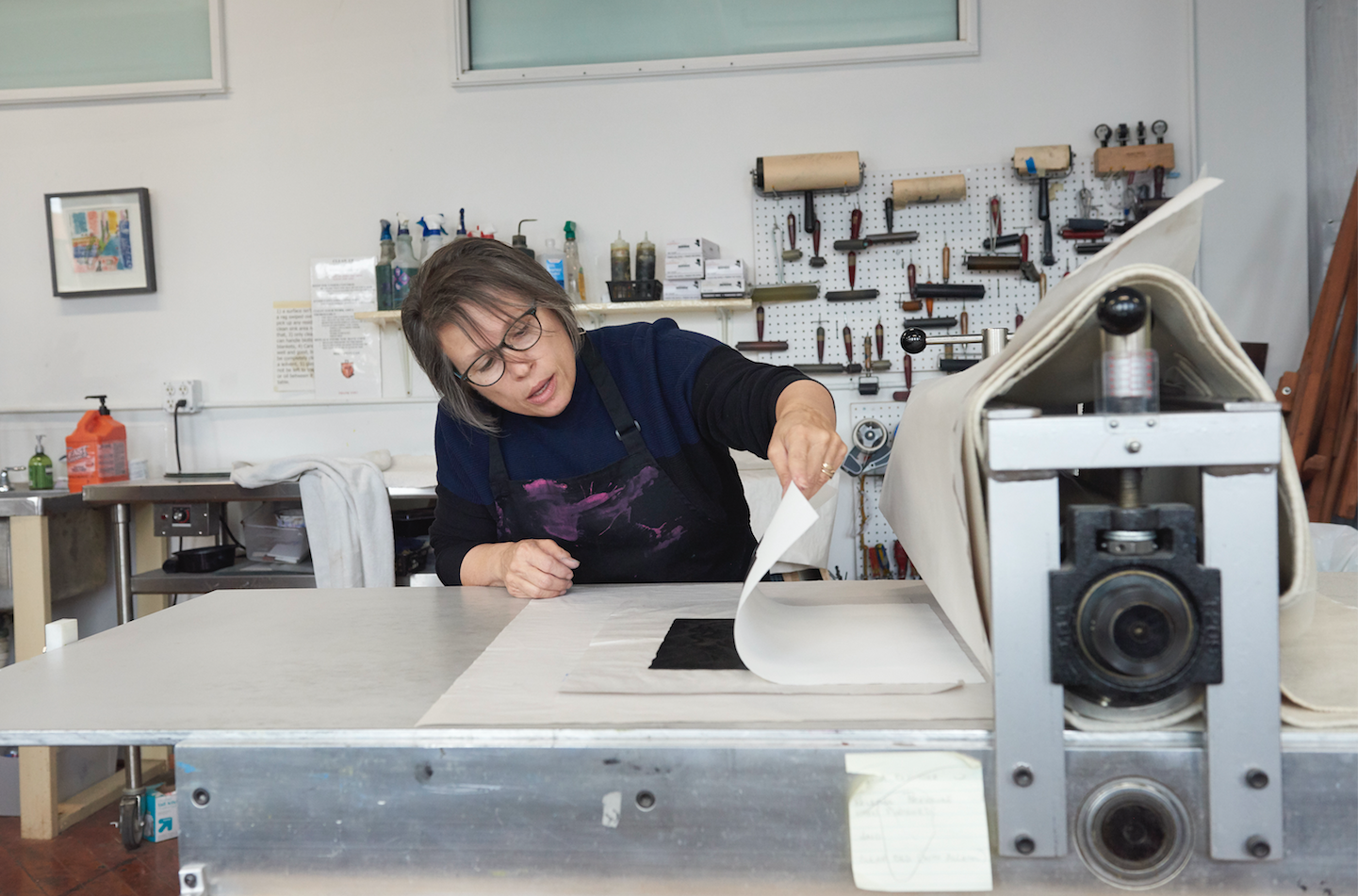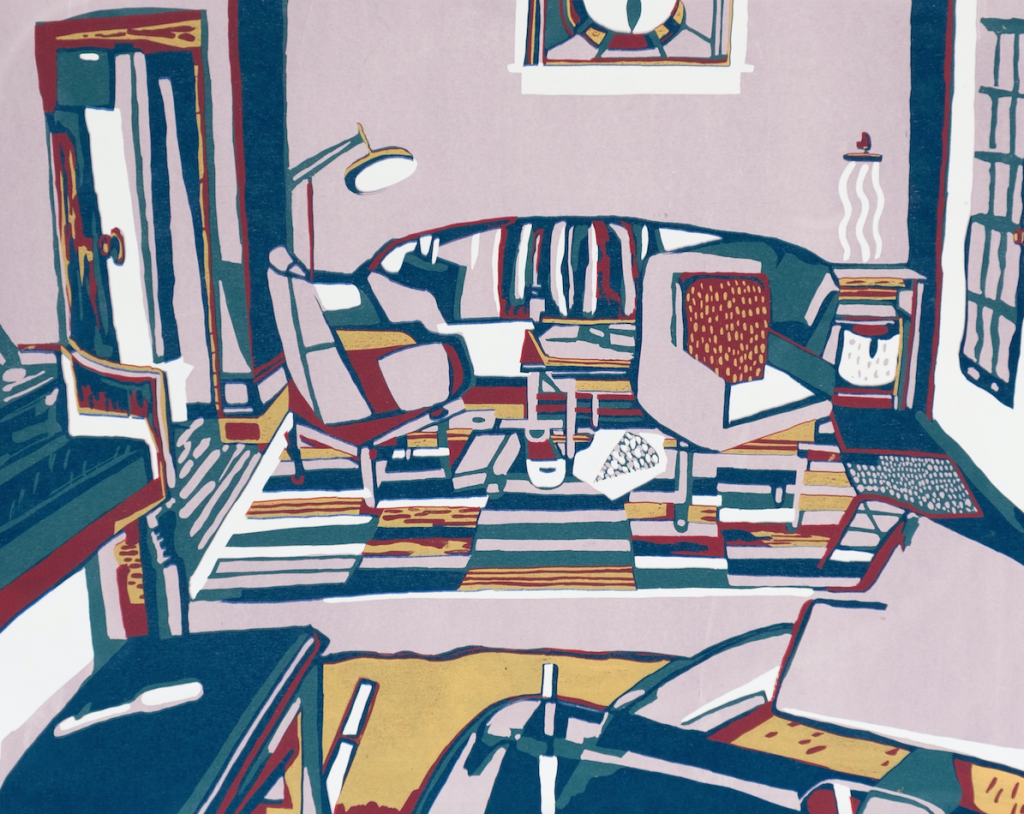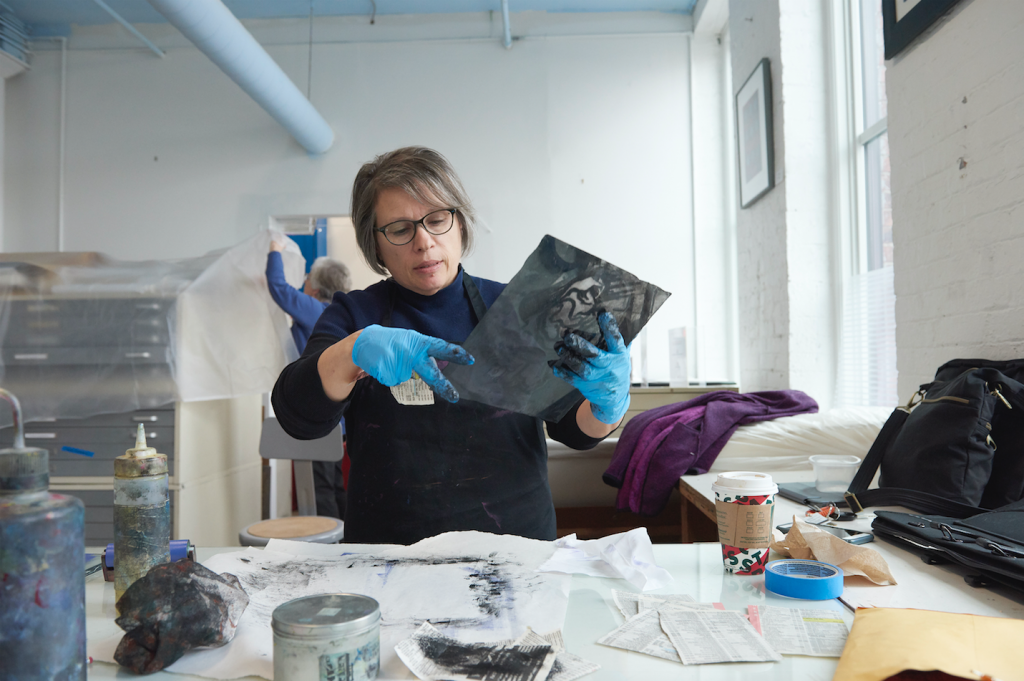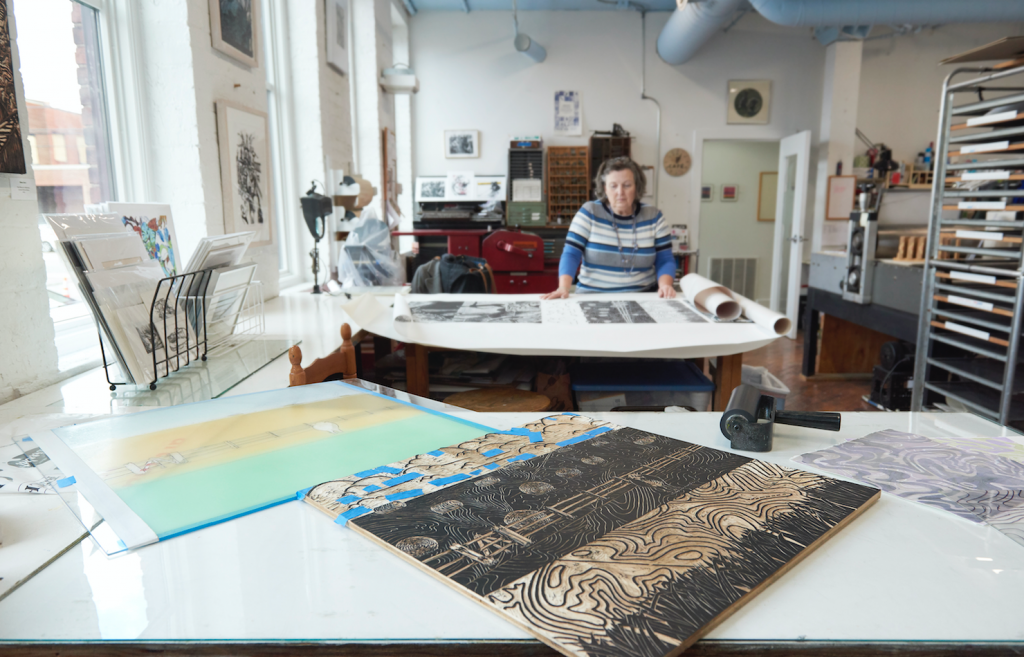Christine Abbott: Phoenix Rising Printmaking Cooperative

In the art world, there’s a commonly held misconception that the best work deals exclusively with the biggest and most define able topics: love, death, and thought.
Printmaker Christine Abbott debunks this idea with her recent work in “Visible Ink”, a group show featuring members of the Phoenix Rising Printmaking Cooperative, now on display at the OSU Faculty Club. Abbott’s quiet, often formal work depicts lush, flattened interior scenes without people. While they depict everyday scenes, they somehow keep us coming back for more, to explore the delicate coloring and formal layers of each piece, or to ruminate on the idea of house and home.

CHRISTINE D’EPIRO ABBOTT WOVEN SILKSCREEN (Photos by Amy Glass)
Phoenix Rising, which has been active in Columbus for more than 20 years, offers members printmaking materials and equipment to create with. The non-profit organization also holds printmaking workshops for the Columbus community, as well as one-on-one lessons, making it a resource for artists of all skill levels
(614) sat down with Abbott to discuss her recent work and what it’s like as an active member of a printmaking co-op.
Can you start by talking about your own work in the show?
2017 marked a return to printmaking for me, but the imagery for this series, the interior scenes that are in “Visible Ink” actually started in St. Louis [after Abbott completed an MFA program at Washington University].
The year that I lived in St. Louis, I lived in a carriage house and cleaned [the owner’s] home in exchange for living over their garage in a nice part of town. So I got to know the family pretty well, and obviously cleaned their house frequently. I found that being in the same space daily inspired me to explore those spaces in my own work. And so when I had kids and was at home all the time, your home is a metaphor in a lot of ways; there are so many layers of meaning.
BROUGHT TO YOU BY
What do you want people to take from your work in the show?
My goal as an artist when I make work is to create an entry point where anyone can connect with it. The cookies are kind of on the shelf, if you will, but the more time you spend with the imagery and the body of work, the more you discover and engage with.
For me, I want an immediate entry point, I want something to grab me right away, but then I also want there to be more compiled than that. It’s a balancing act, but it’s an intuitive one.

You use silk-screen for one of your pieces in the show. What attracted you to working in that format?
First of all, it’s great for color, and the formal qualities of my work are really important to me.
Also, there’s a physicality to screen printing that I love. With silk- screening you’re working with a squeegee, and the paint is thick. It’s like yogurt. The whole time you’ve got this goopy ink and you’re trying to get something that’s slick and at to even out. But what that means is that the bigger the piece you’re working on, the bigger the squeegee you use, and the more physical it becomes.
Screen printing has this incredibly rich history as well, but it’s not something people always understand is a part of their everyday life as well. It creates the shirts we wear, the signage we see all the time.
Visible Ink is a group show, which is a pretty unique format. How does that work?
There are just over 30 pieces from 17 different artists. Part of the advantage of being a Phoenix Rising member is that you’re working side by side with great artists like Anne Cushman, and you can pitch a group show. Before I became a member they had a show at the Zanesville Museum of Art, and it’s really great for that as a part of what you’re doing professionally.
How else has being part of a co-op benefitted your work and practice?
First of all, there’s a natural flow of ideas between co-op members. You can get feedback on your work and technical help too. Plus, you’re exhibiting your work with other people, so you’re naturally developing relationships as you show together and work together. I think it’s very organic.

If I were to move to another city, it’s definitely something I would do. I used to rent a studio space and while that was helpful, it’s not as relationship building as being part of a cooperative. I tell this to my students; I encourage them if they ever move to a city, I’d join a co-op for the professional association and the opportunity to exhibit under the group name as well.
Another reason why I like print- making co-op is the fact that you work with shared gear and equipment. Most people don’t own their own printmaking press; they’re heavy and costly. That collaboration is part of image making; it’s part of printmaking.
Visible Ink, the Phoenix Rising Printmaking Cooperative’s group exhibition, is on display at the OSU Faculty Club, 181 S Oval Drive, through February 21. To learn more, visit phoenixrisingprintmaking.org.
BROUGHT TO YOU BY



